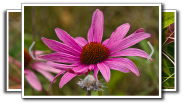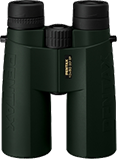pustulated carrion beetle
(Nicrophorus pustulatus)
Conservation • Description • Habitat • Ecology • Distribution • Taxonomy
|
|
||||||||||||||
Description |
Pustulated carrion beetle is a common, large, easily recognized, burying beetle. It occurs in the United States east of the Great Plains and there are just a handful of records on the Great Plains. It occurs across southern Canada from Nova Scotia to British Columbia. It is considered common though it is the rarest of the fifteen Nicrophorus species found in North America. Adults are active from March to October. They are found in a variety of habitats, but mostly in forested habitats and in the transition zone between forests and fields. Pustulated carrion beetle is believed to be a brood parasite, laying its eggs in the nest of Nicrophorus orbicollis and possibly other Nicrophorus species. While other Nicrophorus species can raise up to 50 young, Nicrophorus pustulatus can raise up to 200 young on a single large carcass. It has also been reported to parasitize the eggs of western ratsnake (Pantherophis obsoletus), but there is scant evidence of this. Adults are 9⁄16″ to ⅞″ (14.0 to 22.2 mm) in length. The body is moderately robust, elongate, somewhat flattened, and mostly black. The head and mouthparts are projected forward. The head is large, and it is abruptly narrowed in front of the eyes. The antennae are mostly black. They have 11 segments, but the second segment is very small, making it appear that there are only 10 segments. Segments 7 through 10 form an abruptly widened club at the tip. The club is covered with velvety hairs. The expanded portions of segments 8, 9, and 10 are bright orange. The hardened plate covering the thorax (pronotum) is wider than the head, almost square, and entirely black with no orange markings. It is sharply flattened at the edges with broad margins at the sides and a wide margin at the base. The surface is hairless. The plate between the wing bases (scutellum) is visible, moderate-sized, and entirely black. On the underside of the thorax, the large rearmost plate (metesternum) is sparsely covered with long yellowish-brown hairs, and the plate on each side of the third segment (metepimeron) is hairless. The hardened wing covers (elytra) are truncate, appearing cut off at the tip and exposing 2 or 3 body segments. The lateral margin of each elytron is folded under. The turned portion (epipleuron) is entirely black. The surface of each elytron is coarsely pitted (punctate) and has two faint ridges. It is not covered with long hairs. On each elytron there is a small to medium-sized orange spot on the lateral margin just before the middle, and two small to medium-sized spots near the tip. The spots have the appearance of blisters (pustules). This is the feature that gives the beetle its common name. The legs are black. The fourth segment (tibia) on each hind leg is straight, not curved. The end part of each leg (tarsus), corresponding to the foot, has 5 segments. The last segment has two claws at the tip. The claws are simple, not split, and they are the same size. |
Size |
Total length: 9⁄16″ to ⅞″ (14.0 to 22.2 mm) |
Similar Species |
Habitat |
A variety of habitats, but mostly in forested habitats and in the transition zone between forests and fields |
Ecology |
Season |
March to October |
Behavior |
Adults are active at night and will come to lights. |
Life Cycle |
Adults probably overwinter. Reproduction occurs in the spring and new adults appear in mid- to late summer. |
Larva Food |
|
Adult Food |
|
Distribution |
||
|
Sources |
|
| 6/5/2025 | ||
Occurrence |
||
Common |
||
Taxonomy |
|
Order |
Coleoptera (Beetles) |
Suborder |
Polyphaga (Water, Rove, Scarab, Long-horned, Leaf, and Snout Beetles) |
Infraorder |
Staphyliniformia |
Superfamily |
Staphylinoidea (rove, ant-like stone, and carrion beetles) |
Family |
Silphidae (burying and carrion beetles) |
Subfamily |
Nicrophorinae |
Genus |
Nicrophorus (burying beetles) |
Subordinate Taxa |
|
|
|
Synonyms |
|
Necrophorus bicolon Necrophorus marginatus fasciatus Necrophorus marginatus unicolor Necrophorus pustulatus Necrophorus tardus Necrophorus bicolon |
|
Common Names |
|
blistered burying beetle pustulated carrion beetle |
|
Glossary
Elytra
The hardened or leathery forewings of beetles used to protect the fragile hindwings, which are used for flying. Singular: elytron.
Epipleuron
On beetles: The prominent, turned down or turned under, lateral edge of an elytron. Plural: epipleura.
Pronotum
The exoskeletal plate on the upper side of the first segment of the thorax of an insect.
Scutellum
The exoskeletal plate covering the rearward (posterior) part of the middle segment of the thorax in some insects. In Coleoptera, Hemiptera, and Homoptera, the dorsal, often triangular plate behind the pronotum and between the bases of the front wings. In Diptera, the exoskeletal plate between the abdomen and the thorax.
Tarsus
On insects, the last two to five subdivisions of the leg, attached to the tibia; the foot. On spiders, the last segment of the leg. Plural: tarsi.
Tibia
The fourth segment of an insect leg, after the femur and before the tarsus (foot). The fifth segment of a spider leg or palp. Plural: tibiae.
Visitor Photos |
||
Share your photo of this insect. |
||
This button not working for you? |
||
Brandi S. |
 |
My cat caught it on my kitchen counter. |
MinnesotaSeasons.com Photos |
||
|
||
|
||

Slideshows |
|

Visitor Videos |
||
Share your video of this insect. |
||
This button not working for you? |
||
|
Other Videos |
||
|

|
Created: 6/5/2025 Last Updated: © MinnesotaSeasons.com. All rights reserved. |


